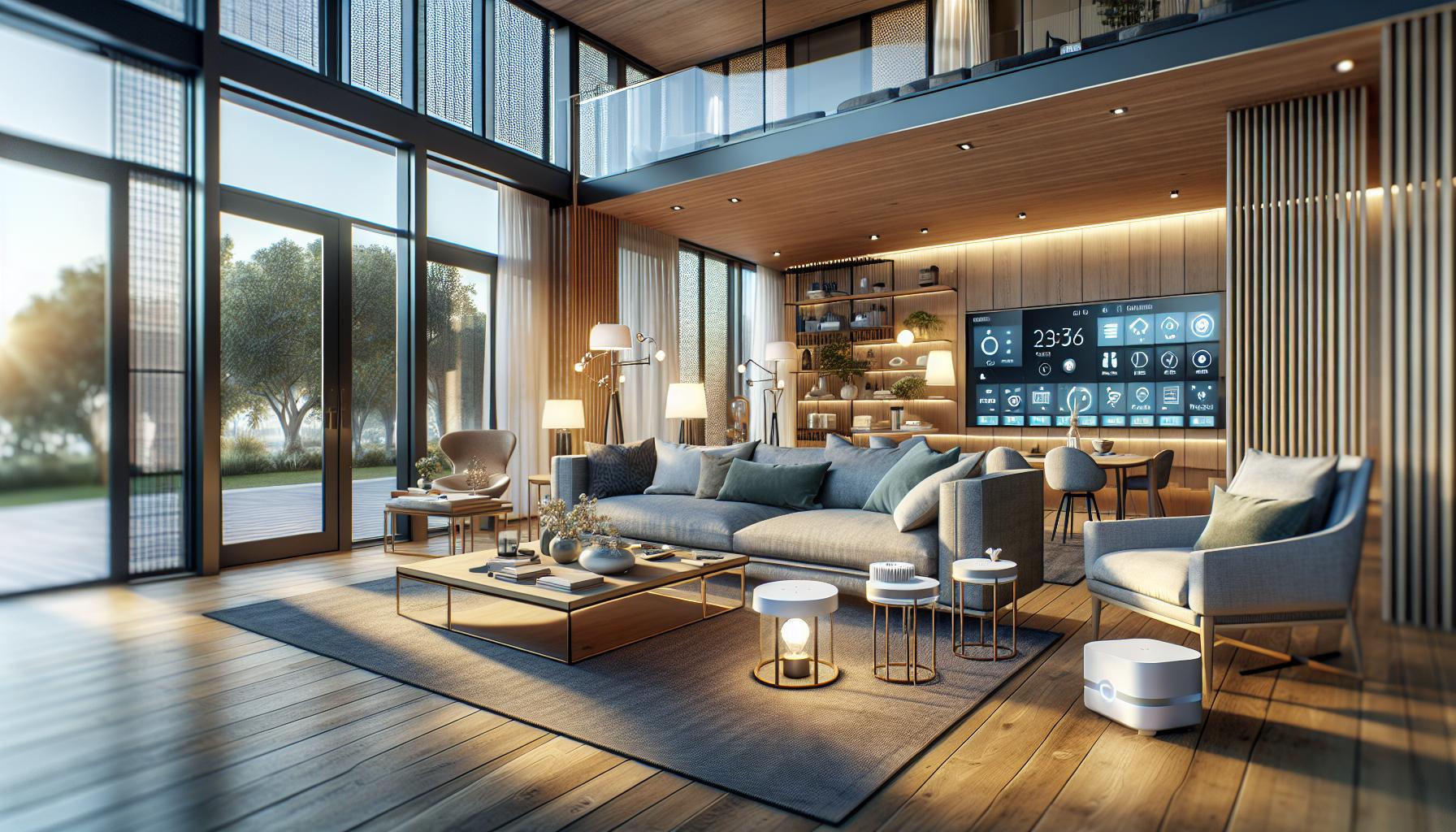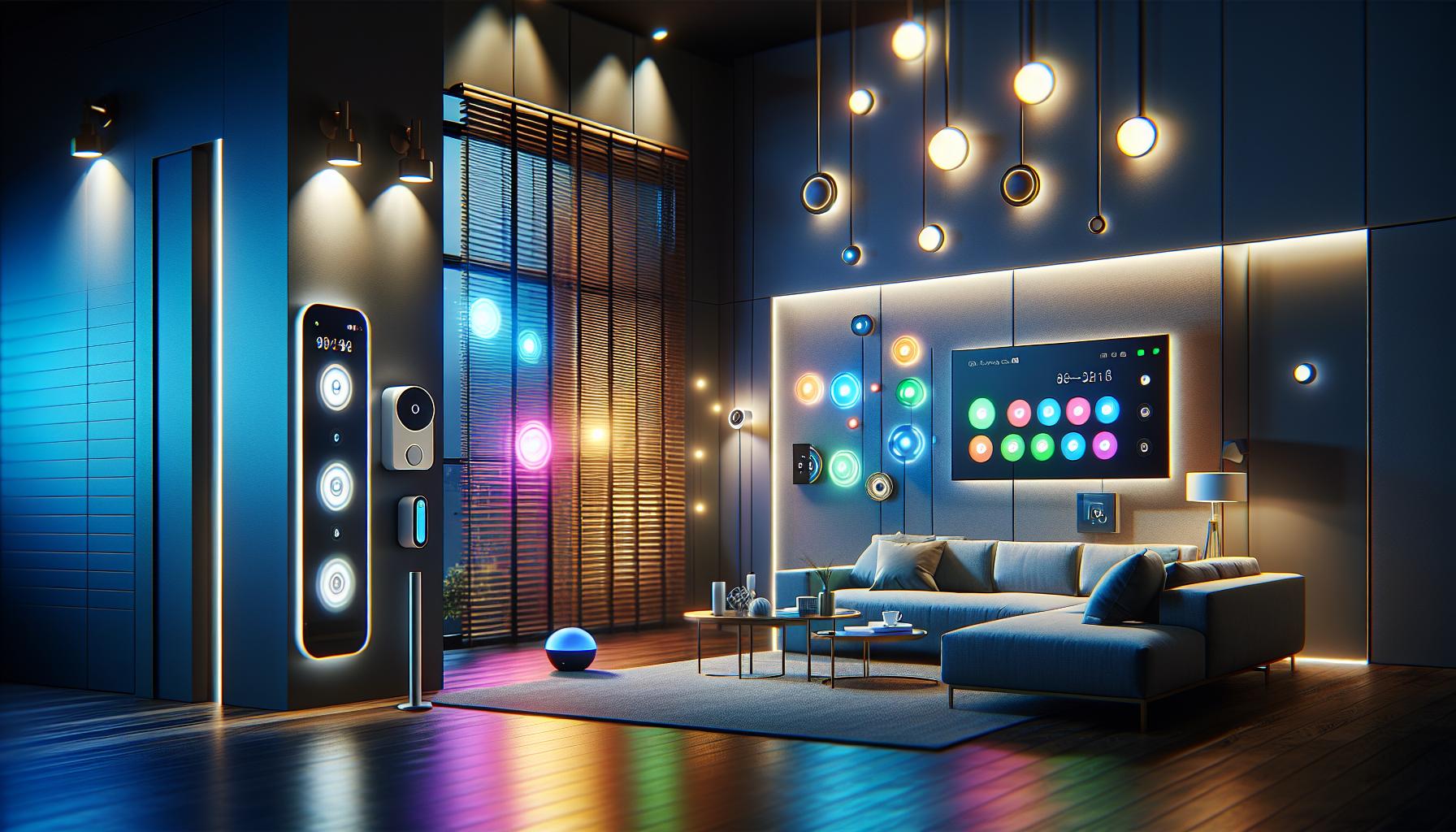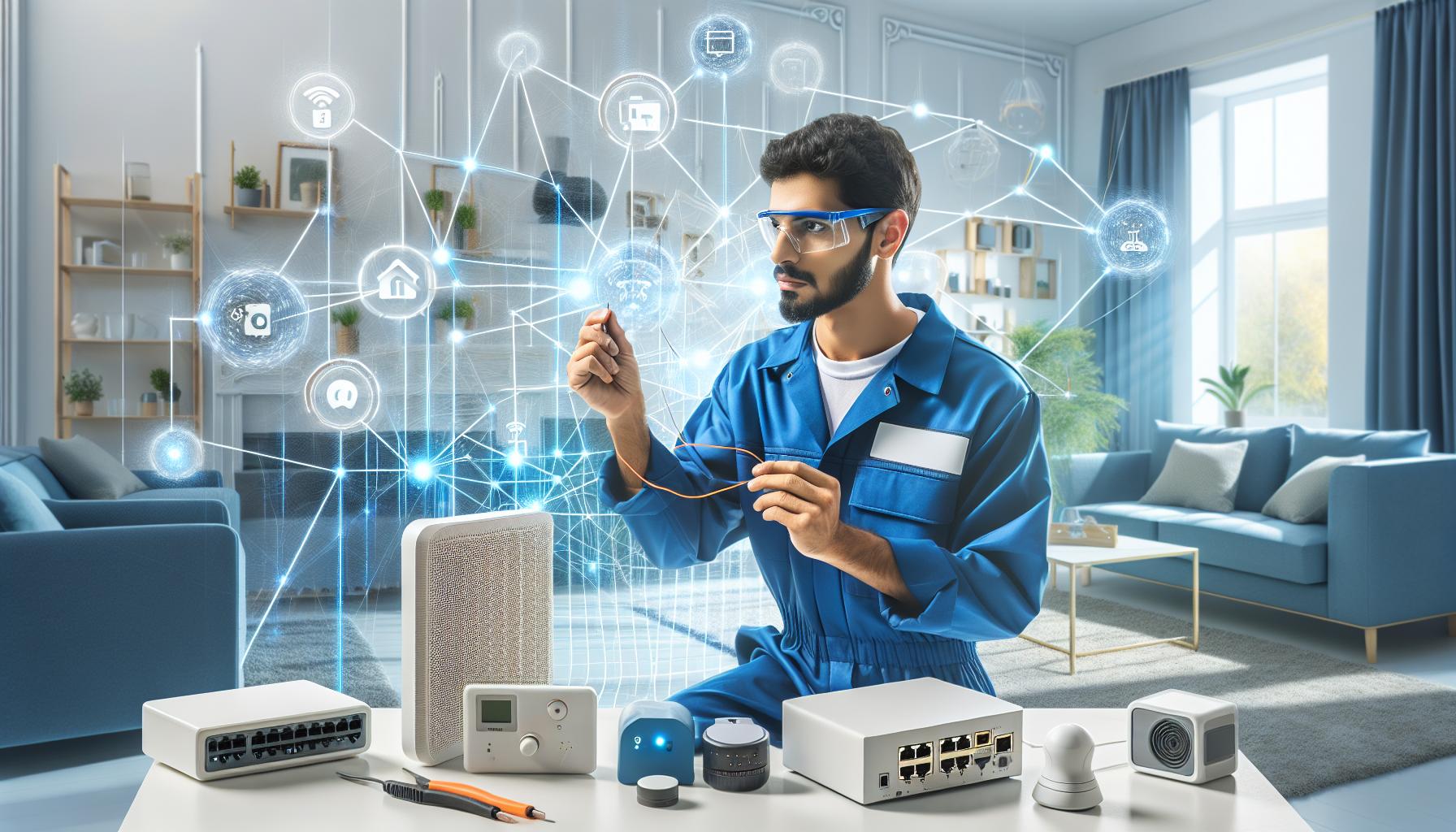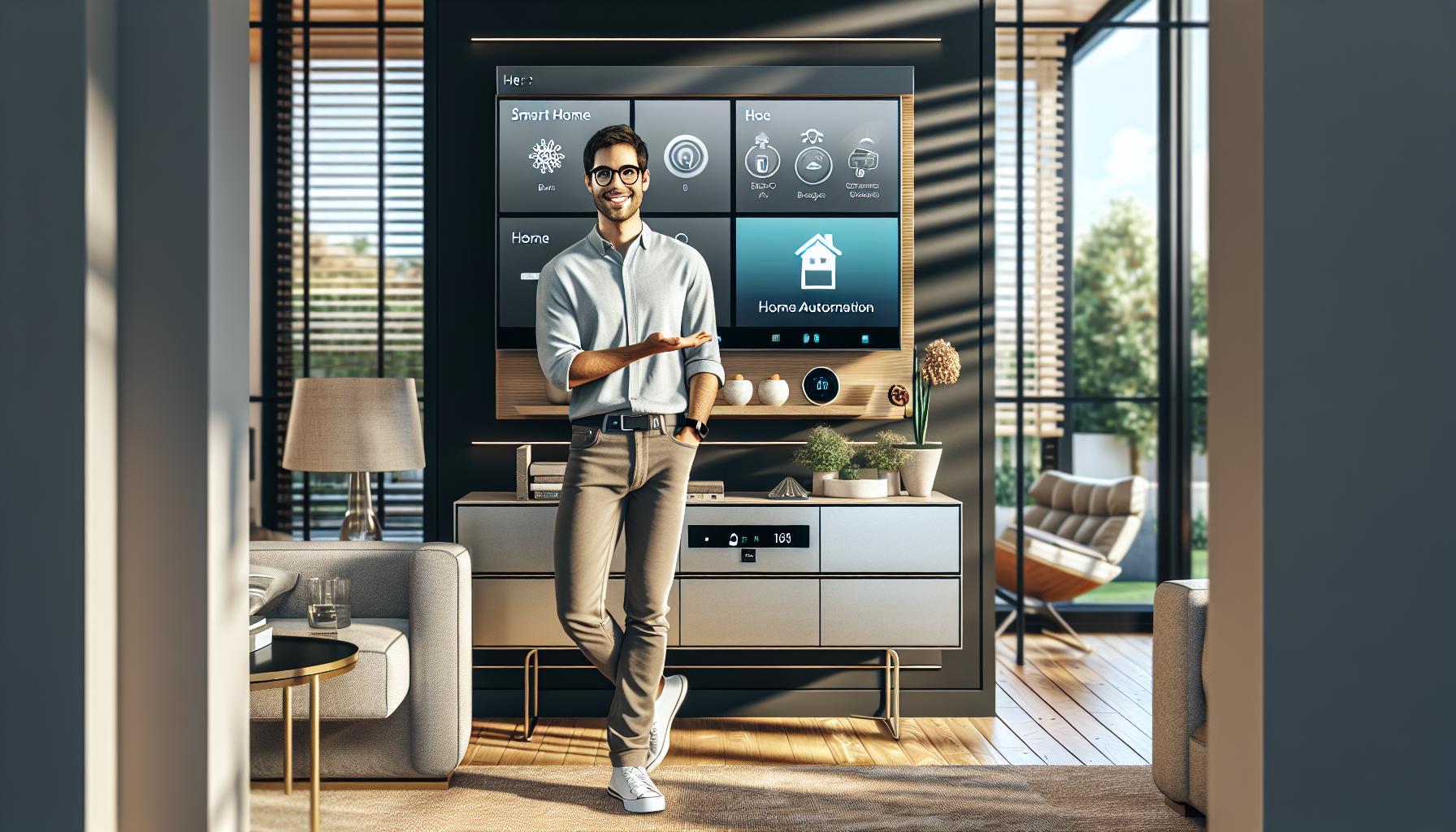I’ve witnessed the incredible evolution of home automation over the past decade. What started as simple programmable thermostats has transformed into fully integrated smart home systems that can anticipate our needs and make our lives easier. Today’s custom smart homes represent the perfect fusion of comfort convenience and cutting-edge technology.
As a smart home technology enthusiast I’m excited to share how these personalized systems are revolutionizing the way we live. From voice-controlled lighting and automated security to smart appliances that learn your preferences custom smart homes offer endless possibilities. Whether you’re building from scratch or upgrading your existing space modern home automation solutions can transform any house into an intelligent living space that’s uniquely yours.
Key Takeaways
- Custom smart homes integrate multiple systems like lighting, security, and climate control through a central hub controller for seamless automation and personalized living experiences
- Essential components include environmental sensors, smart switches, connected security systems, and robust network infrastructure capable of supporting 200+ devices
- Professional installation offers expert configuration and warranty coverage, while DIY approaches can save 40-60% on costs but require technical knowledge
- Regular maintenance, including monthly firmware updates, quarterly network analysis, and sensor cleaning, is crucial for optimal system performance and longevity
- Future-proofing requires scalable infrastructure with extra capacity for network ports, power circuits, and hub controllers to accommodate emerging technologies
- The implementation of protocols like Matter, AI-powered automation, and enhanced security measures will shape the next generation of smart home capabilities
What Makes a Home Truly Smart
A truly smart home transcends basic automation through seamless integration of intelligent systems and personalized responses to occupant behaviors. I’ve identified key elements that distinguish advanced smart homes from properties with standalone connected devices.
Core Smart Home Components
Smart homes rely on essential components that form the foundation of an intelligent living space:
- Central Hub Controllers coordinate device communication through protocols like Zigbee Z-Wave Matter
- Environmental Sensors monitor temperature humidity motion light levels occupancy
- Smart Switches enable automated control of lighting outlets appliances
- Connected Security Systems integrate cameras doorbell sensors alarms
- Climate Control Systems manage HVAC zones air quality ventilation
- Network Infrastructure provides reliable WiFi mesh networking connectivity
- Scene Creation combines multiple device actions (lighting temperature music) into single commands
- Conditional Automation triggers responses based on time weather occupancy patterns
- AI Learning adapts system behaviors to user preferences routines schedules
- Voice Control enables natural interaction through platforms like Alexa Google Assistant
- Mobile Management offers remote monitoring control through smartphone apps
- Energy Optimization automatically adjusts power consumption based on usage patterns
| Integration Metric | Impact on Smart Home Performance |
|---|---|
| Device Response Time | <100ms for immediate feedback |
| Automation Rules | 25+ customizable triggers per room |
| AI Learning Period | 14-30 days for pattern recognition |
| Voice Command Success | 95%+ accuracy rate |
| Energy Savings | 15-30% reduction in utility costs |
Planning Your Custom Smart Home System

Creating a custom smart home system requires strategic planning to align technology with lifestyle requirements.
Assessing Your Lifestyle Needs
A lifestyle assessment identifies essential smart home features that match daily routines. I recommend tracking daily activities for 2 weeks to understand automation opportunities, such as lighting patterns, temperature preferences or security needs. Key assessment areas include:
- Working patterns: Remote work setups, home office automation requirements
- Family dynamics: Child safety features, elderly care monitoring systems
- Daily schedules: Morning routines, evening activities, weekend variations
- Entertainment habits: Media consumption, gaming setups, outdoor audio needs
- Energy usage: Peak consumption times, heating/cooling preferences
- Security concerns: Access control points, surveillance requirements
Setting a Realistic Budget
Smart home investments follow a tiered pricing structure based on system complexity. Here’s a breakdown of typical component costs:
| Component Category | Entry Level | Mid-Range | Premium |
|---|---|---|---|
| Hub Controller | $100-200 | $300-500 | $800+ |
| Smart Switches | $25-35/each | $45-60/each | $80+/each |
| Sensors | $20-30/each | $40-60/each | $100+/each |
| Security Cameras | $50-100/each | $150-300/each | $400+/each |
| Installation | DIY | $500-1,500 | $2,000+ |
- Core infrastructure components
- Essential automation features
- Professional installation requirements
- Future expansion capabilities
- Monthly subscription costs
- Maintenance expenses
- System upgrades
Essential Smart Home Features

Smart homes require core features that create an intelligent living environment through automated systems and seamless integration. These essential components form the foundation of a truly connected home that responds to occupant needs.
Lighting and Climate Control
Smart lighting systems integrate LED bulbs motion sensors timers to automate illumination based on occupancy time of day. I’ve found that connecting smart thermostats to environmental sensors enables precise temperature control in multiple zones while reducing energy costs by 15-23%. Key components include:
- Color-changing LED bulbs rated for 25,000+ hours
- Motion detectors with 30-foot range coverage
- Learning thermostats that adjust to daily patterns
- Temperature humidity sensors for each room
- Automated blinds with light level detection
Security and Access Control
Connected security features provide 24/7 monitoring protection through integrated cameras sensors locks. The system includes:
- 1080p security cameras with night vision range of 30 feet
- Smart door locks with fingerprint WiFi capability
- Window door sensors with instant notifications
- Video doorbells featuring two-way audio
- Mobile app control with real-time alerts
- Professional monitoring options with 30-second response
- Multi-room audio with synchronized playback
- 4K video distribution to 8+ displays
- Voice control for content selection playback
- Automated lighting scenes for viewing
- Integration with major streaming services
- Mobile device casting to any connected screen
| Feature Type | Response Time | Battery Life | Coverage Range |
|---|---|---|---|
| Motion Sensors | 0.5 seconds | 12-18 months | 30 feet |
| Door Locks | 2-3 seconds | 6-12 months | N/A |
| Cameras | Real-time | AC powered | 30-50 feet |
| Audio/Video | <1 second | AC powered | Whole home |
Smart Home Installation Process

Installing a custom smart home system involves multiple interconnected steps from initial setup to final configuration. Each phase requires careful attention to system compatibility, network infrastructure, and integration protocols.
Professional vs DIY Installation
Professional installation provides comprehensive system integration with expert configuration, while DIY approaches offer cost savings for tech-savvy homeowners. Here’s a comparison of key aspects:
Professional Installation Benefits:
- Certified technicians handle complex wiring configurations
- Guaranteed compatibility between components
- Professional-grade network setup
- Extended warranty coverage
- Post-installation support services
- Documentation of system architecture
DIY Installation Advantages:
- 40-60% cost savings on installation
- Flexible implementation timeline
- Direct control over component selection
- Hands-on system knowledge
- Easy modifications as needs change
- Community support resources
Network Infrastructure Requirements
A robust network foundation ensures reliable smart home operations through proper equipment placement and configuration. Essential components include:
Core Network Elements:
- Enterprise-grade WiFi 6 router
- Gigabit ethernet switches
- Mesh network satellites
- Network security gateway
- Structured wiring panel
- Category 6A cabling
| Component | Minimum Requirement |
|---|---|
| Internet Speed | 200 Mbps download |
| WiFi Coverage | -67 dBm signal strength |
| Network Ports | 24 ports per 2000 sq ft |
| Backup Power | 1500VA UPS system |
| Cable Rating | CAT6A or better |
| Switch Speed | 1 Gbps per port |
I emphasize the importance of separate VLANs for IoT devices, guest networks, and primary home networks to maintain security and performance. The network infrastructure forms the backbone of any smart home system, determining its reliability and expansion capabilities.
Managing Your Smart Home
Smart home management integrates voice commands mobile apps daily tasks into a seamless experience. The following sections detail essential control methods maintenance practices that optimize system performance longevity.
Voice Control and Mobile Apps
Voice control platforms transform smart home interaction through natural language commands that activate devices scenes or routines. I’ve found these key capabilities enhance daily control:
- Connect multiple voice assistants (Alexa Google Assistant Siri) to expand device compatibility
- Create custom voice commands for complex automated sequences like “Movie Time” or “Good Morning”
- Access real-time status updates through mobile dashboards showing device states energy usage security feeds
- Set location-based triggers that activate scenes when entering or leaving designated areas
- Monitor system performance through detailed analytics measuring response times device reliability usage patterns
- Update firmware monthly on hub controllers devices to patch security vulnerabilities enhance features
- Test backup batteries in security sensors smoke detectors every 90 days
- Clean camera lenses motion sensors monthly to maintain detection accuracy
- Monitor network performance with speed tests on primary secondary networks
- Review automation logs weekly to identify failed commands connectivity issues
- Replace smart bulb batteries based on manufacturer specifications typically 12-24 months
- Check mesh network coverage quarterly using WiFi analyzer tools
- Verify offline backup systems function during scheduled power outages
| Maintenance Task | Frequency | Impact on Performance |
|---|---|---|
| Firmware Updates | Monthly | 15-30% faster response |
| Battery Tests | 90 Days | 99.9% uptime |
| Sensor Cleaning | Monthly | 95% detection accuracy |
| Network Analysis | Weekly | <50ms latency |
| Log Review | Weekly | 90% automation success |
Future-Proofing Your Smart Home
Future-proofing transforms a smart home from a static system into an evolving ecosystem that adapts to emerging technologies. I’ve identified key strategies to ensure smart home systems remain current through technological advancements.
Scalability Considerations
Smart home scalability relies on modular infrastructure design that accommodates system expansion. I recommend:
- Installing extra electrical conduits in walls for future wiring needs
- Implementing enterprise-grade network switches with 50% unused ports
- Selecting hub controllers supporting 200+ connected devices
- Using protocol-agnostic systems compatible with Zigbee Matter Z-Wave
- Planning dedicated spaces for additional equipment rack modules
- Setting up separate VLANs with 40% bandwidth allocation headroom
| Component | Base Capacity | Recommended Headroom |
|---|---|---|
| Network Ports | 24 ports | 12 spare ports |
| Hub Controllers | 100 devices | 100 additional devices |
| Power Circuits | 4 circuits | 2 dedicated spare circuits |
| Storage Space | 2TB | 4TB expandable |
- Matter protocol adoption enabling universal device compatibility
- AI-powered predictive automation learning from 30+ behavior patterns
- Edge computing reducing cloud dependence by 75%
- Enhanced security through blockchain verification systems
- Quantum encryption protecting smart home data
- Augmented reality interfaces for system control visualization
- Bio-authentication methods replacing traditional passwords
- Self-healing networks with automated issue resolution
- Energy harvesting sensors eliminating battery dependencies
- Mesh networking systems with 99.9% uptime reliability
| Technology | Adoption Timeline | Impact Level |
|---|---|---|
| Matter Protocol | 2024 | High |
| Edge Computing | 2025 | Medium |
| Quantum Security | 2026 | High |
| Bio-authentication | 2024 | Medium |
Conclusion
Custom smart homes represent the perfect fusion of technology and personal comfort. I’ve seen how these intelligent systems transform everyday living spaces into responsive environments that cater to our unique needs and preferences.
Whether you’re building from scratch or upgrading your existing home the possibilities are endless. With proper planning careful installation and regular maintenance your smart home will evolve alongside emerging technologies to serve you better each day.
I’m confident that investing in a custom smart home system is more than just embracing modern convenience – it’s preparing for a future where our homes actively participate in enhancing our quality of life.





